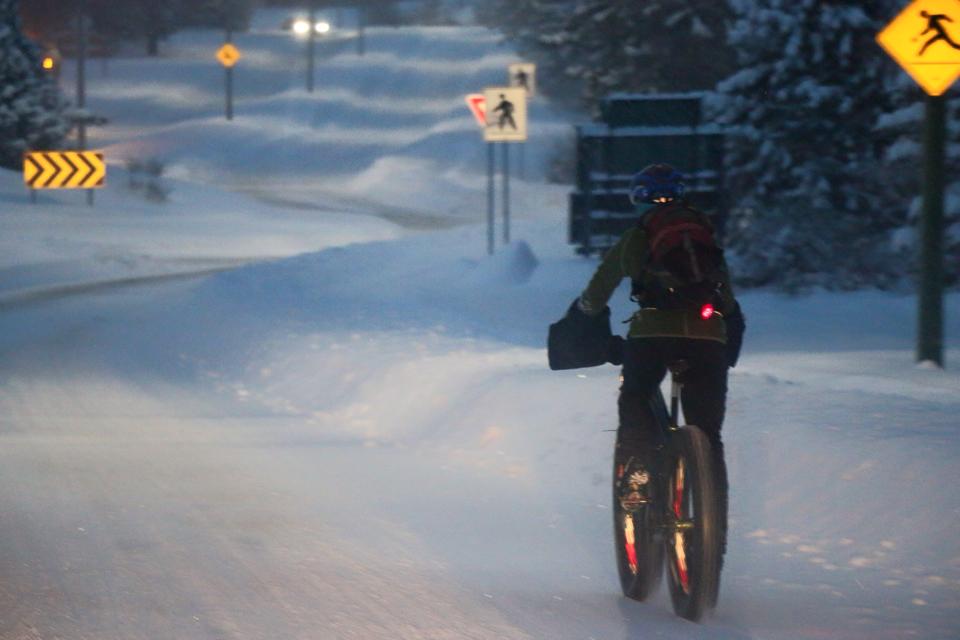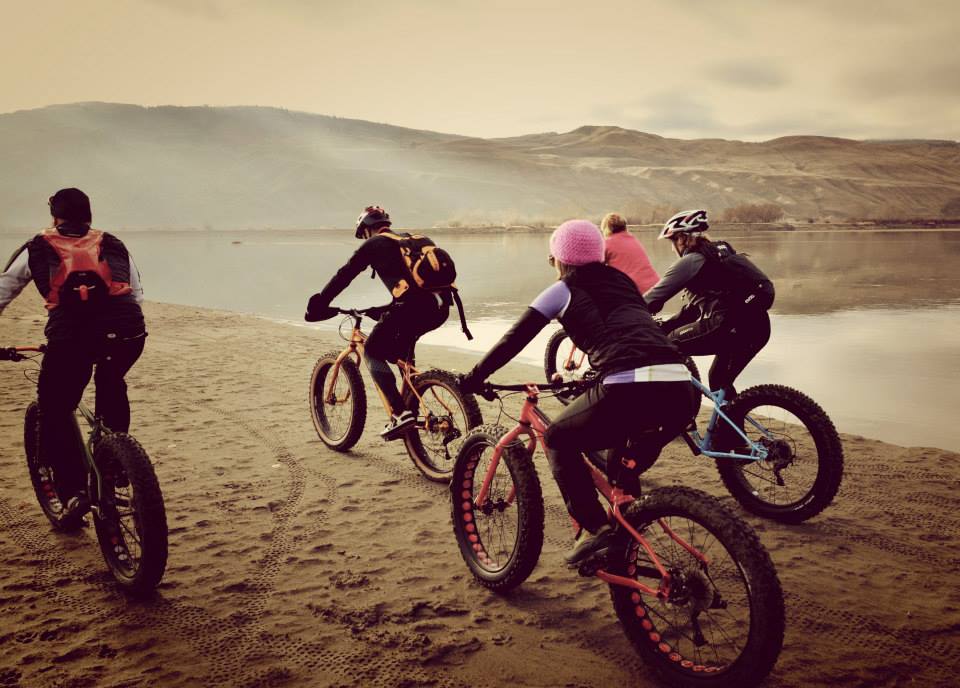Elevate your local knowledge
Sign up for the iNFOnews newsletter today!
Sign up for the iNFOnews newsletter today!
Selecting your primary region ensures you get the stories that matter to you first.

SNOW NO MATCH FOR FAT FOCKERS
KAMLOOPS – You love mountain biking. You get out every weekend, at least. Then it snows and your bike goes into hibernation for the winter. That is, unless you are a fat biker.
About 50 men and women are part of the Fat Fockers, a group of mountain bikers who not only enjoy off road biking but also tackling the snow on bikes with tires as big as five inches wide. A core group of 20 to 25 riders try to make it out at least once a week, though many will often venture out several times a week when the conditions are good and some even commute to work daily on these bikes built for winter.

When the snow flies they head out with snowshoes and sometimes snowmobiles to pack a trail. They can often be found at Kenna Cartwright Park, in Barnhartvale, at the Bike Ranch or at Isobel Lake, their main haunt thanks to the elevation and consistent snow. Forest service roads and lakes such as Paul Lake where snowmobile trails have created good riding paths are also popular.
Brad Heyman, a group leader and owner at Taboo Cycle, says fat biking, named for the oversized tires, is the fastest growing segment in biking with a huge spike in ridership and manufacturers in the last two years.
“More manufacturers are in on it now. Until last season you would have to spend north of a couple grand,” Heyman says. “Now you can start at the $1,200 to $1,500 range. Either side (of $2,000) will get you started”
There are several things outside of cost you need to consider before you start snow biking though, Heyman notes. You have to be comfortable in the cold and want to be outdoors. Aerobically snow biking is similar to cross country skiing.
The feel of the ride is different too, fresh snow is harder and can be like skiing, but after 10 days of compacting and hardening it tends to ride more like dirt.

The fat tires help you navigate the snow, they are bigger and should be kept at a lower tire pressure. Heyman says the average tire used is about four inches wide, but can vary from 3.8 inches to five inches and you can also get them studded. Other than these specialty tires, which can also be used in summer and only fit specialty frames, the only other thing you really need to get started is bar mitts to keep your hands warm.
While the bike itself is an obvious difference when it comes to winter riding, Heyman says it’s really the experience that he enjoys.
“It's a whole different aspect,” he notes, “The sounds, sights, animals. The scenery is totally different in winter.”

To contact a reporter for this story, email Jennifer Stahn at jstahn@infonews.ca or call 250-819-3723. To contact an editor, email mjones@infonews.ca or call 250-718-2724.
News from © iNFOnews.ca, . All rights reserved.
This material may not be published, broadcast, rewritten or redistributed.

Want to share your thoughts, add context, or connect with others in your community?
You must be logged in to post a comment.